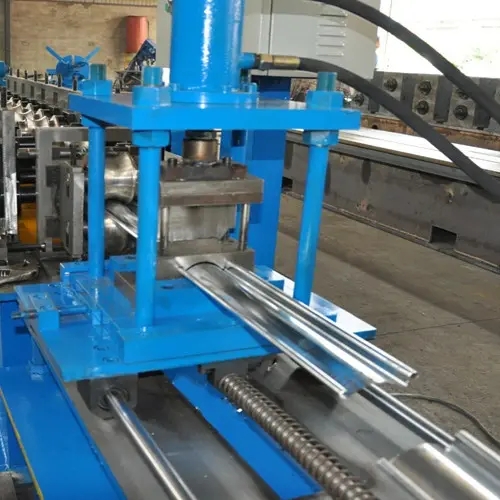
Ceiling Channel Roll Forming Machine Revolutionizing Construction and Design
In the realm of modern construction and architecture, efficiency and precision are paramount. Among the tools revolutionizing the fabrication of building materials is the ceiling channel roll forming machine. This specialized machinery has gained significant traction in recent years, allowing manufacturers to produce ceiling channels with remarkable speed and accuracy. This article delves into the workings, advantages, and applications of ceiling channel roll forming machines.
Understanding Roll Forming
Roll forming is a continuous bending operation in which long strips of metal are passed through a series of rolls to create a specific profile. This process is particularly effective for producing uniform, consistent shapes that adhere to strict design specifications. The ceiling channel is typically U-shaped and used extensively in the construction of false ceilings and various structural applications.
The roll forming process involves several stages, including uncoiling the metal sheet, feeding it through a series of rollers shaped to create the desired profile, cutting it to length, and finally stacking the finished products for distribution. The precision with which a ceiling channel roll forming machine operates not only reduces material waste but also ensures that every piece meets stringent quality standards.
Advantages of Ceiling Channel Roll Forming Machines
1. Cost-Effectiveness One of the most significant advantages of using a ceiling channel roll forming machine is the reduction in labor and production costs. The quick setup times and automated processes minimize manual labor, thus lowering operational expenses.
2. High Precision and Consistency With advanced technology, these machines deliver high precision in dimensions and shape, leading to a consistent product that meets industry standards. This ensures that each ceiling channel fits seamlessly into the designated application, preventing costly reworks.
3. Versatility Ceiling channel roll forming machines can be adjusted for various profiles and thicknesses, allowing manufacturers to produce different ceiling channel specifications. This adaptability makes them a valuable investment for companies looking to diversify their product offerings.
4. Speed of Production The production rate of roll forming machines is significantly higher than traditional metal fabrication processes. This speed allows businesses to meet tight deadlines and respond quickly to market demands.

5. Durability and Quality The materials processed in a ceiling channel roll forming machine are typically steel, aluminum, or other metals known for their strength and durability. This ensures that the final products are robust, suitable for various applications, and have a long lifespan.
Applications in Construction
Ceiling channels are integral parts of various construction projects. They are primarily used in the installation of false ceilings, providing support and flexibility in design configurations. Additionally, ceiling channels are essential for creating grid systems that hold lighting fixtures, air conditioning ducts, and insulation materials.
Beyond false ceilings, these channels are also used in framing systems for walls, providing structural support to suspended ceilings in commercial buildings, schools, and residential properties. Their ability to bear loads while maintaining a lightweight nature makes them versatile in different architectural designs.
Technological Advancements
Recent technological advancements have further improved the efficiency of ceiling channel roll forming machines. Features such as computer numerical control (CNC) enable operators to program precise specifications directly into the machine, reducing the chance of human error. Additionally, automated feeding and cutting systems enhance production efficiency.
As manufacturers strive for sustainable practices, many modern roll forming machines are designed to minimize waste and energy consumption. Innovations in materials and processes also contribute to a smaller carbon footprint, aligning with global efforts to promote environmentally friendly construction practices.
Conclusion
The ceiling channel roll forming machine represents a significant leap forward in the construction industry. By enhancing production efficiency, reducing costs, and ensuring high-quality output, these machines are redefining how building materials are fabricated. As construction demands continue to evolve, embracing such innovative technologies will be crucial for organizations aiming to maintain competitive advantages in the marketplace. The future of construction is bright, and the ceiling channel roll forming machine is at the forefront of this transformation.